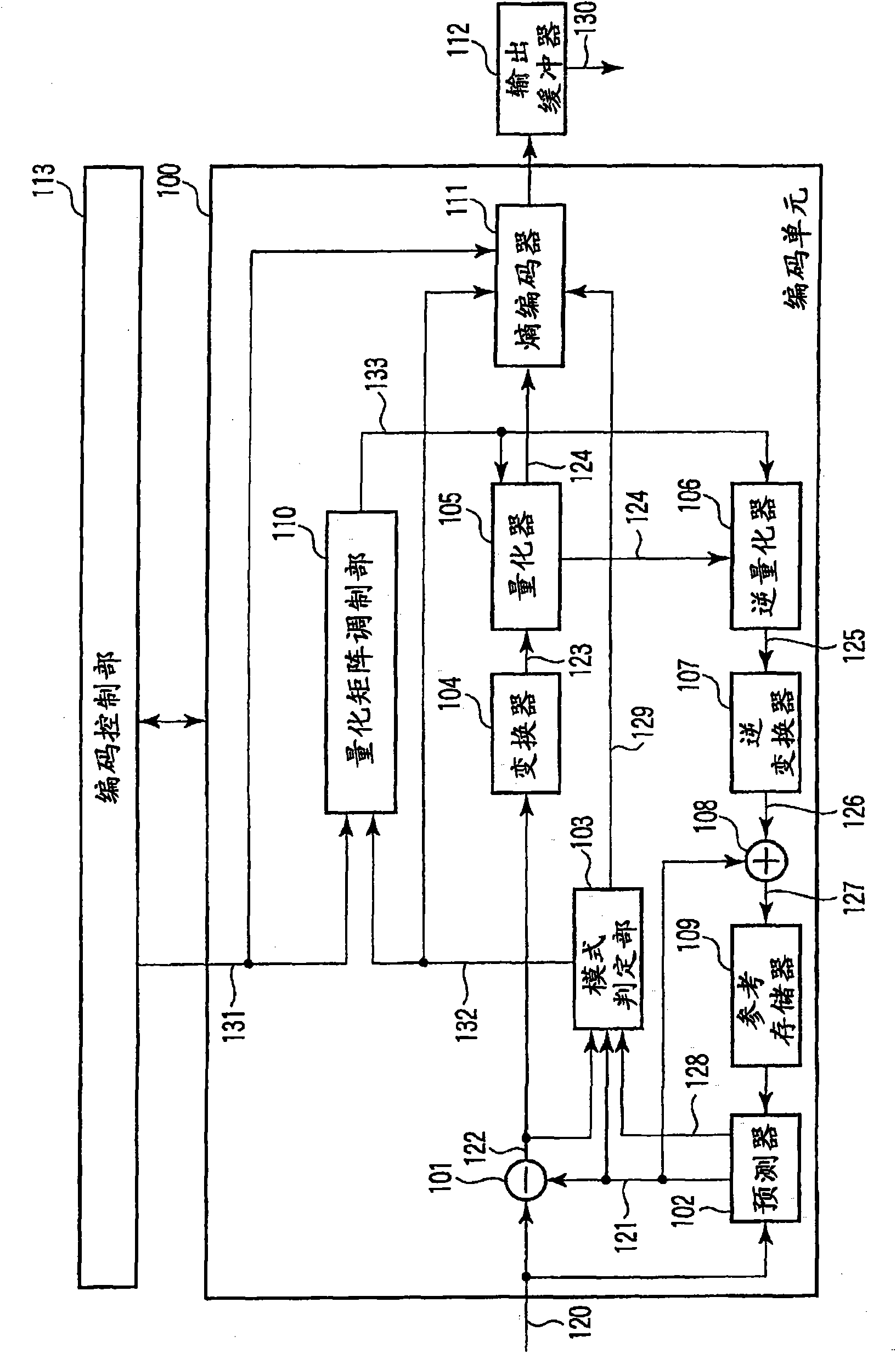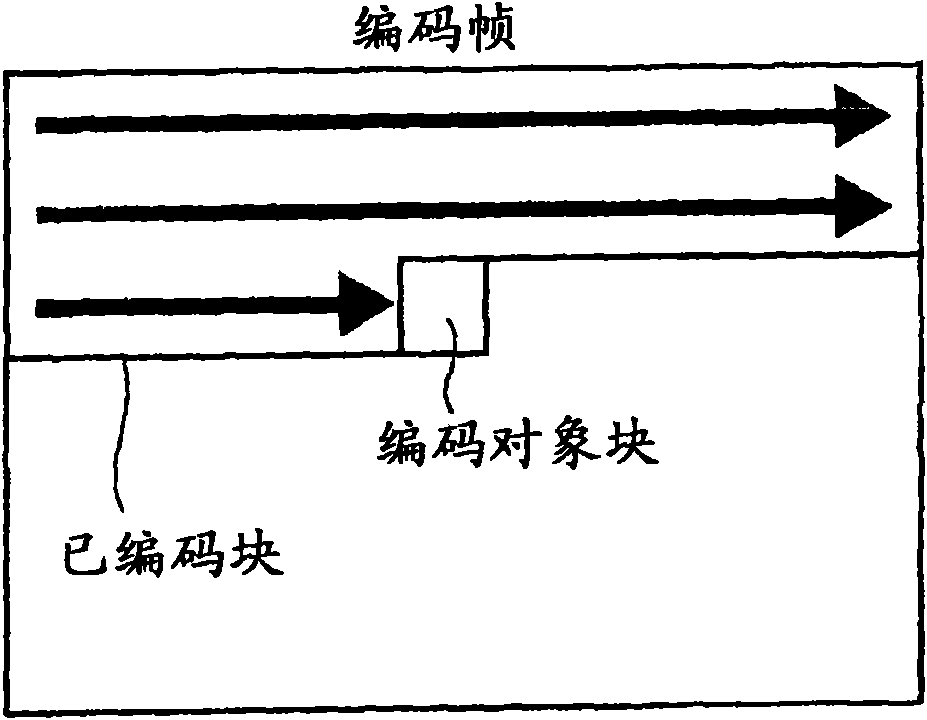Image encoding and image decoding method and device
An image coding and image decoding technology, applied in image communication, television, electrical components, etc., can solve problems such as impossible quantization processing optimization
- Summary
- Abstract
- Description
- Claims
- Application Information
AI Technical Summary
Problems solved by technology
Method used
Image
Examples
no. 1 approach
[0051] refer to figure 1 In the image encoding device according to the first embodiment of the present invention, an input image signal 120 of a moving image or a still image is divided into small pixel block units, such as macroblock units, and input to the encoding section 100 . Here, a macroblock is used as a basic processing block size (size) of encoding processing. Hereinafter, the encoding target macroblock of the input image signal 120 is simply referred to as a target block.
[0052]Coding section 100 prepares a plurality of prediction modes that differ in block size or method of generating a predicted image signal. Specifically, methods for generating a predicted image signal are broadly classified into intra prediction in which a predicted image is generated only within a frame to be coded, and inter prediction in which prediction is performed using a plurality of temporally different reference frames. In this embodiment, for simplicity of description, as figure ...
no. 2 approach
[0191] When the quantizer 105 and the inverse quantizer 106 perform quantization / inverse quantization corresponding to Equation (6) and Equation (18), instead of modulating the quantization matrix as in the first embodiment, it is also possible to control the quantization / inverse quantization Operation accuracy is modulated by the operation accuracy control parameter. In this case, Formula (6) and Formula (18) are respectively changed as follows.
[0192] Y(i,j)=sign(X(i,j))×(abs(X(i,j))×QM(i,j)×MLS(i,j,idx)+f)>>Q bit
[0193] (26)
[0194] X'(i,j)=sign(Y(i,j))×(abs(Y(i,j))×QM(i,j)×IMLS(i,j,idx))bit
[0195] (27)
[0196] Here, MLS and IMLS are modulated calculation accuracy control parameters and are expressed by the following equation.
[0197] MLS(i j, idx) = (LS(i, j) + MM(i, j, idx)) (28)
[0198] IMLS(i, j, idx) = (ILS(i, j...
no. 3 approach
[0205] When the quantizer 105 and the inverse quantizer 106 perform quantization / inverse quantization corresponding to Equation (4) and Equation (16), instead of modulating the quantization matrix as in the first embodiment, the quantization parameter may be modulated. In this case, Formula (4) and Formula (16) are respectively changed as follows.
[0206] Y(i,j)=sign(X(i,j))×(abs(X(i,j))×QM(i,j)×LS(i,j)+f) / (QP step (i, j, idx))
[0207] (30)
[0208] X'(i,j)=sign(Y(i,j))×(abs(Y(i,j))×QM(i,j)×ILS(i,j))×(QP step (i, j, idx))
[0209] (31)
[0210] Here, QP step is the modulation quantization parameter, expressed by the following formula.
[0211] QP step (i, j, idx) = (Q step +MM(i, j, idx)) (32)
[0212] Here, Q step is the quantization parameter.
[0213] So for the quantization parameter Q step Modulating has the ...
PUM
 Login to View More
Login to View More Abstract
Description
Claims
Application Information
 Login to View More
Login to View More - R&D
- Intellectual Property
- Life Sciences
- Materials
- Tech Scout
- Unparalleled Data Quality
- Higher Quality Content
- 60% Fewer Hallucinations
Browse by: Latest US Patents, China's latest patents, Technical Efficacy Thesaurus, Application Domain, Technology Topic, Popular Technical Reports.
© 2025 PatSnap. All rights reserved.Legal|Privacy policy|Modern Slavery Act Transparency Statement|Sitemap|About US| Contact US: help@patsnap.com



